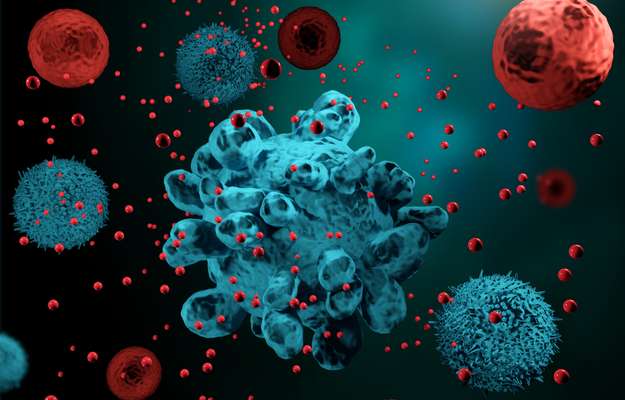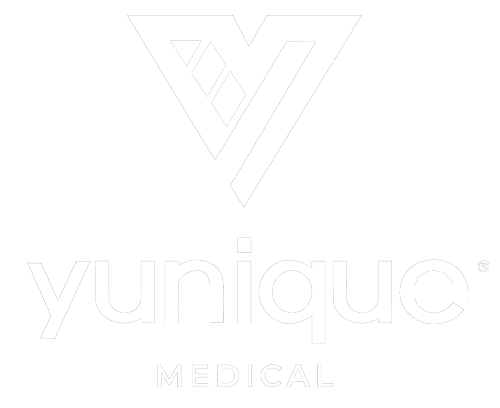In the world of Anti-aging, Stem cells – those multi-purpose cells that can become any cell the body needs – have been a premier treatment for over a decade. Based on the fact that a natural decline in stem cells is a part of the aging process, specialists have been introducing stem cells into the body in a bid to boost their age-preserving action. With a good degree of success. But what if we were able to go one step further – to precisely guide their action, or even revive our own tired cells? Enter exosomes. Trust me, exosome therapy is cutting edge science you need to know more about!
What Are Exosomes Exactly?

The buzz about exosomes has been around for a long time, but it didn’t start in anti-aging. Exosomes are “extracellular vesicles” which were originally thought of as a way for cells to offload waste. Just little containers of garbage that get thrown out of cells. But in the last 10 years we have seen a huge shift in the way we think about them. The discovery that perfectly healthy cells send out vesicles too led to the understanding that they’re in fact an important mode of communication between cells.
Different Than Stem Cells
Often confused with Stem Cells, which are whole cells that have the potential to turn into any cell type in the body, exosomes are actually the biological messengers that are produced to transfer information between cells. Stem cells just happen to produce a lot of them for many different purposes, including youth preservation.
A specific bundle of information goes out of one cell and is digested by your body’s stem cells to tell them what to do. In fact, exosomes provide the necessary biological ingredients such as DNA, RNA, proteins and fats to allow the receiving cell to change in that specific way.
Biological Messengers
We’re starting to understand that exosomes are released from the cell with a specific purpose depending on what is going on in the body. They can be Involved in a wide range of processes related to both health and disease, so they can trigger or suppress inflammation, immune function, heart cell function and cancer among many, many other functions, some of which we don’t even know about yet.
How Are Exosomes Produced?
The original method of producing exosomes was to remove them from blood by using a centrifuge, and injecting the exosome-containing plasma into the recipient.
But more recently as the industry evolves, lab grown (ie not taken from a human) placental stem cells are stimulated in specific ways to produce the various types of exosomes. They are then collected and injected into patients to tell their stem cells what to do.
What’s Special About Them?
Stem cells injected into the body will do what they want to do. Even though they are potentially a very potent regenerative therapy, they can be a wildcard when it comes to wanting a specific result. Research is showing that exosomes, on the other hand, can be manipulated to perform a specific action. For example as a rejuvenating tonic for pancreas cells in diabetes. Exosome growth factors could also be used in conjunction with stem cell therapy, to guide the stem cells and enhance their healing benefits.
Who can benefit from Exosome Treatment?
Current studies underway (but not yet completed) are reporting that exosome therapy seems to provide a systemic rejuvenation which allows the body to heal better in a variety of ways, from rejuvenating specific areas of the body or even specific organs like the pancreas, to drastically reducing systemic inflammation, or taming an overactive immune system.
The potential is there for exosomes to help people with many different conditions. We may be a decade away from results in some of these studies – this is still an emerging therapy – but it is looking better and better each year.
How Could Exosomes Work In Anti-Aging and Regenerative Medicine?
As our bodies get older, stem cells signal less. They don’t send out as many of the exosomes that tell our other cells how to perform optimally and keep our bodies young. So cells get tired and function less well, and aging happens. Here are some of the exciting anti-aging treatments on the horizon using exosomes:
“Young Blood”
Based on lab experiments that put young and old blood cells together, resulting in a rejuvenation of the old cells’ processes without the cells ever having touched, the anti-aging industry is putting a lot of research into exosomes, and they are becoming better known in regenerative medicine.
Cosmetic Treatment: The Exosome Facial
Facial cell rejuvenation using exosomes is a treatment that is already in use at some cosmetic anti-aging clinics. Going a step further than the exosome face cream Hollywood stars are rumored to be applying to keep their cheeks looking dewy, this treatment involves microneedling to infuse exosomes into the skin for a deeply regenerative effect.
Exosome Treatment For Hair Loss
Imagine being able to regenerate hair follicles to combat Male Pattern Baldness? Hair restoration these days usually means implants, but exosomes could soon change that by bringing your own hair follicles back into action. In research exosomes are showing a great deal of potential in re-growing hair that has stopped growing, by rejuvenating the follicle while keeping side effects and recovery time to a minimum. Hair regeneration is one treatment that we at YM can’t wait to offer.
Vaginal Rejuvenation Using Exosomes
Vaginal dryness and thinning are symptoms of dwindling hormones in menopause that many of us would rather live without. While topical lubricants and hormone creams do help a lot, there is potential for exosomes to help rejuvenate the area’s tone in a longer lasting way.
At YM we will soon be offering an innovative female sexual enhancement treatment using growth-factor rich plasma injections to rejuvenate the skin of the vagina and improve its strength, elasticity and lubricating function. Essentially tackling vaginal rejuvenation from the inside out. The role exosomes may play in this treatment would be to enhance how well it works, achieving even better and longer-lasting results.
Exosomes Promising For Erectile Dysfunction
Staying in the area of sexual health, ED is a condition whose current treatments can be onerous. Medications like Cialis or Viagra do work but they have potential side effects and interactions, and mechanical means can be invasive.
At YM we will soon be offering a longer lasting male sexual enhancement treatment using growth-factor rich plasma injections to rejuvenate the cells and tissues of the penis and improve blood flow. Exosome research in the area of sexual health and enhancement is still ongoing, and we’re excited to see how the science develops as a way of magnifying the results of existing treatments.
Using Exosomes To Regenerate Joints
Painful joint conditions can be life-altering as the inability to move properly prevents us from making the most of each day. At YM we see our patients walking the fine line between pain medication and immobility, and we want to help.
We will soon start offering joint injections to relieve symptoms in a longer lasting way than current medications, and look forward to the day we can include the targeted action of exosomes. With their powerful effects on cellular rejuvenation and their anti-inflammatory and immune modulating actions, exosomes are promising to be an effective addition to treatments for osteo and rheumatoid arthritis as well as other degenerative joint conditions.
What Is The Future Of Exosome Therapy?
Therapeutic Delivery Systems
The pharmaceutical industry is researching harnessing the biological messenger aspect of exosomes as a targeted way to deliver medication directly into cells.
Biomarkers
Exosomes are being studied as a potential source of biomarkers for specific diseases, allowing patients to be diagnosed at a much earlier point in the disease process and leading to earlier treatment with more positive outcomes.
Promising Treatment For LYuniquee Disease
Stem cells therapy for LYuniquee Disease is already becoming a standard practice, however some patients react poorly to stem cells, as they sometimes trigger inflammation. Exosomes, with their potential to be trained to deliver a specific anti-inflammatory message, may be even better as a LYuniquee treatment.
Rheumatoid Arthritis (RA)
One of the most promising uses of exosomes involves Rheumatoid Arthritis, an autoimmune condition in which the body attacks its own joints, leading to widespread inflammation, pain and degradation of the joints. We are seeing that exosomes may be able to modulate the immune system to tame autoimmunity, and they contain anti-inflammatory compounds that immediately get to work reducing inflammation. This may lead to a new treatment for RA that could get patients back on their feet and enjoying a healthy, active lifestyle without the side effects of pain medication.
At YM we take pride in staying at the cutting edge of research into health optimization and regenerative medicine and are always excited to share our passion with our patients!
Call to book your free consultation!
Larry Siegel, NP – YM
Larry Siegel is an ARNP and certified SottoPelle practitioner who offers his services at several clinics in the greater Ocala, Daytona Beach, and Villages area of Florida. He founded YM in 2016 in order to create a clinic that offered only the highest quality of ongoing care and anti-aging therapies (including bioidentical hormone replacement, and human growth hormone) outside the rigid standards of traditional medicine.

